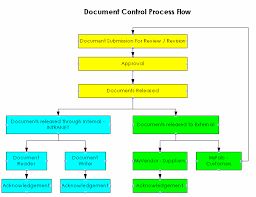
Understanding the Document Management Process Flow
Document management is a critical aspect of any organization’s operations, ensuring that information is captured, stored, organized, and accessed efficiently. A well-defined document management process flow helps streamline operations, reduce errors, and improve productivity.
Document Creation
The process begins with document creation, where content is generated either digitally or in physical form. It is essential to establish guidelines for creating standardized documents to maintain consistency and clarity.
Document Capture
Once a document is created, it needs to be captured into the document management system. This can involve scanning physical documents or uploading digital files to a centralized repository for easy access.
Document Indexing
Indexing involves assigning metadata tags to documents to categorize them based on content, type, date, author, and other relevant attributes. This step is crucial for efficient search and retrieval of documents later on.
Document Storage
Stored documents should be organized in a logical manner within the document management system. Proper folder structures and naming conventions help users locate files quickly and avoid duplication.
Document Retrieval
When a document needs to be accessed, users can search for it using keywords or metadata tags assigned during indexing. Quick retrieval of information saves time and enhances decision-making processes.
Document Sharing and Collaboration
In a collaborative environment, documents may need to be shared with team members for review or editing. Version control mechanisms ensure that everyone works on the latest iteration of a document.
Document Archiving and Disposal
Obsolete or outdated documents should be archived or disposed of according to retention policies to free up storage space and maintain data security compliance.
In conclusion, an effective document management process flow simplifies the handling of information within an organization, promoting efficiency and transparency across all departments.
Optimizing Efficiency: Understanding the Document Management Process Flow in Organizations
- What is a document management process flow?
- Why is document management important for organizations?
- How does document capture work in the process flow?
- What are the benefits of indexing documents in a document management system?
- How can document retrieval be optimized within a document management process?
What is a document management process flow?
A document management process flow outlines the systematic steps involved in managing documents within an organization, from creation to disposal. It serves as a roadmap that guides how documents are captured, stored, indexed, retrieved, shared, and eventually archived or disposed of. By defining clear procedures and workflows for handling documents, a document management process flow helps streamline operations, enhance efficiency, ensure compliance with regulations, and improve overall productivity. It provides a structured approach to managing information assets effectively and facilitates seamless collaboration among team members.
Why is document management important for organizations?
Effective document management is crucial for organizations as it ensures streamlined operations, enhances productivity, and promotes regulatory compliance. By implementing a structured document management process flow, organizations can easily capture, store, retrieve, and share information, leading to improved decision-making and collaboration among team members. Document management also helps in reducing errors, minimizing duplication of work, and maintaining data integrity. Furthermore, with the increasing emphasis on data security and privacy regulations, a robust document management system ensures that sensitive information is protected and accessed only by authorized personnel. Overall, document management plays a vital role in enhancing organizational efficiency, fostering innovation, and ensuring seamless business processes.
How does document capture work in the process flow?
Document capture plays a crucial role in the document management process flow by transforming physical or digital documents into a format that can be stored and accessed efficiently within the system. This step involves scanning paper documents or importing electronic files into a centralized repository. During document capture, metadata may be extracted to categorize and index the documents for easy retrieval later on. By capturing documents effectively, organizations can ensure that valuable information is securely stored and readily available for users, enhancing productivity and streamlining workflow processes.
What are the benefits of indexing documents in a document management system?
Indexing documents in a document management system offers numerous benefits to organizations seeking to streamline their operations and enhance efficiency. By assigning metadata tags to documents, indexing facilitates quick and accurate search and retrieval processes, saving time for users who need to access specific information promptly. Additionally, indexed documents are organized in a structured manner, enabling easy categorization based on content, type, date, or author, which improves overall document management and ensures better compliance with regulatory requirements. Ultimately, the benefits of indexing documents include enhanced productivity, reduced errors, improved decision-making capabilities, and better collaboration among team members within an organization.
How can document retrieval be optimized within a document management process?
Optimizing document retrieval within a document management process involves implementing efficient search mechanisms and robust indexing strategies. By assigning relevant metadata tags to documents during the indexing phase, users can quickly locate specific files based on keywords, dates, authors, or other attributes. Additionally, establishing a user-friendly interface with advanced search functionalities can further streamline the retrieval process. Regularly updating and maintaining the document management system to ensure accurate indexing and storage organization is also crucial for optimizing document retrieval efficiency. By prioritizing these aspects, organizations can enhance productivity, save time, and improve overall workflow within their document management process.
